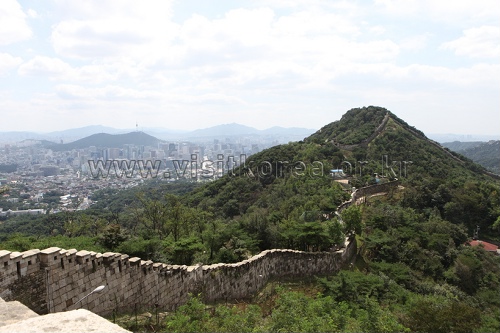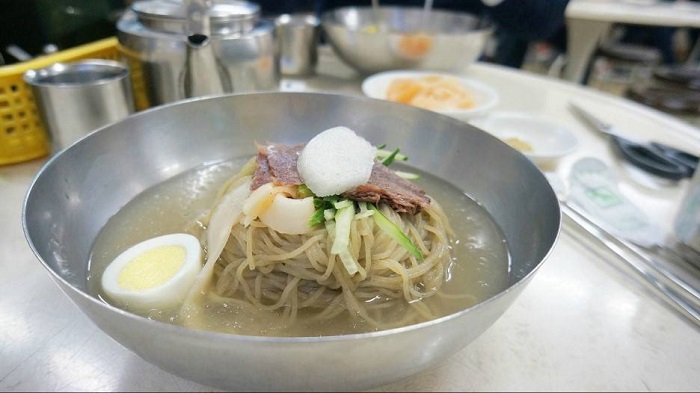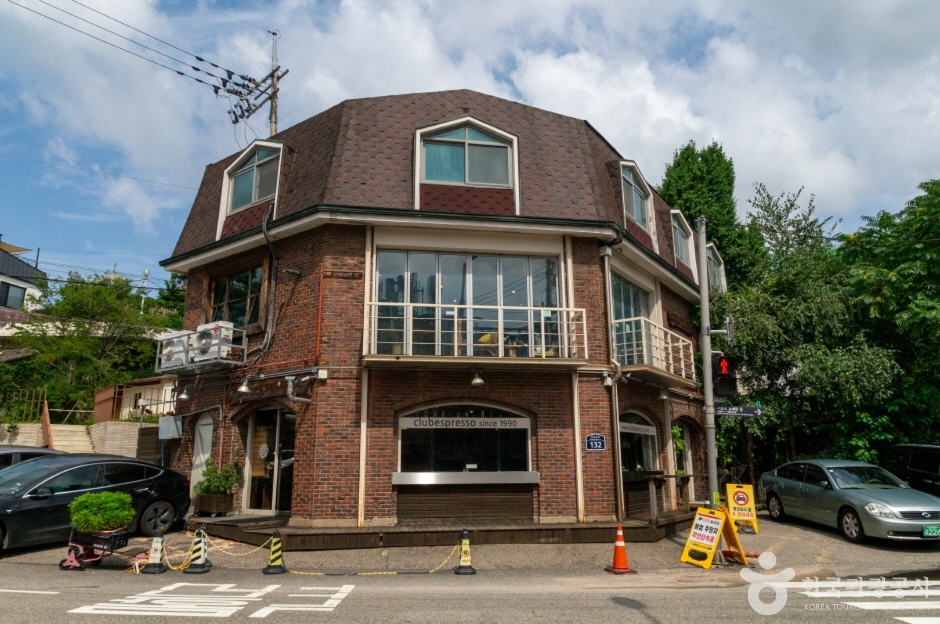Bukhansan National Park (Seoul District) (북한산국립공원(서울))
16.0Km 2024-11-27
262 Bogungmun-ro, Seongbuk-gu, Seoul
+82-2-909-0497
Bukhansan Mountain was officially designated as a national park in 1983. Bukhansan National Park covers both Bukhansan and Dobongsan Mountains, and spans a total area of 80.699 ㎢. At the top of Bukhansan Mountain are Baegundae Terrace (835.6 m), Insubong Peak (810.5 m) and Mangyeongdae Terrace (799.5 m), which gave the mountain the nickname "Samgaksan" or the "three-horned mountain." The mountain had other names: Sambongsan (mountain with three peaks), Hwasan (flower mountain), and Buaak (mountain shaped like a person giving a baby a piggyback ride). The current name, Bukhansan, was given after the Bukhansanseong Fortress was built under King Sukjong of the Joseon dynasty.
CheongKwanJang - Seoul Nat’l Univ. Branch [Tax Refund Shop] (정관장 서울대)
16.0Km 2024-04-18
Store #102, Yeseong Officetel, 1798, Nambusunhwan-ro, Gwanak-gu, Seoul
-
Seodaemun Prison History Museum (서대문형무소역사관)
16.0Km 2024-12-02
251 Tongil-ro, Seodaemun-gu, Seoul
Seodaemun Prison was built under the Japanese administration to imprison independence movement activists. It first opened on October 21, 1908 under the name Gyeongseong Prison. Eventually, so many activists were imprisoned that the building had to be expanded. At that time, the name changed to Seodaemun Prison on September 3, 1912. Eighty years later, the prison was turned into Seodaemun Independence Park on August 15, 1992 to commemorate the Korean patriots who were tortured in prison, giving their lives for freedom. Of the many buildings, only seven were preserved for their historical significance, among which three prison buildings and the execution site were designated as a Historic Site. In 1998, the park underwent another transformation into today's Seodaemun Prison History Hall to educate the public on the importance of Korea's independence and the sacrifices of those who fought to achieve it.
Dongnimmun Gate (독립문)
16.0Km 2022-12-15
251, Tongil-ro, Seodaemun-gu, Seoul
Dongnimmun stands at the location originally known as Yeongeun, where envoys were once treated. When a Chinese envoy visited, the King would go out through this door to greet. In 1898, to announce the independence from Japan, Dongnimun was constructed with the fund collected by the citizens. The traces of the past still remain on Dongnimmun with two pillars in front of Dongnimmun being the remains of Yeongeunmun.
The Arc de Triomphe in France can be recalled in comparison to Dongnimmun. Dongnimmun was built using granite with a passageway x_height of 14.28 meters. On the top it is written ‘Dongnimmun’ in Korean with the national flag drawn on each side. On the inner-left side there are stone stairs leading to the attic. The national flower Mugunghwa are planted around Dongnimmun. Now it is surrounded by roads and it is eye-catching to view when passing by.
Peoples Eyewear - Bundang Branch [Tax Refund Shop] (피플스안경 분당)
16.0Km 2024-04-22
Store #109, 97, Baekhyeon-ro, Bundang-gu, Seongnam-si, Gyeonggi-do
-
Bugaksan Mountain (북악산)
16.0Km 2024-03-04
Cheongun-dong, Jongno-gu, Seoul
+82-2-765-0297
Bugaksan Mountain is the mountain that one can see behind the Gyeongbokgung Palace and the Cheong Wa Dae to the north. Hanyangdoseong, the city wall that surrounded the historic capital of Hanyang, was built by connecting the ridges of this mountain. These walls can still be found today, having been preserved quite well. Different trails weave through the area along the Hanyangdoseong, the Seoul City Wall, and one can visit these trails at night as well. Bugak Skyway is a road that connects Changuimun Gate to Jeongneung Royal Tomb, and one can get a great view of Seoul’s city center from the Palgakjeong Pavilion on Bugak Skyway.
Gamnamu Jip (감나무집)
16.0Km 2024-02-28
45 Dasan-ro 747beon-gil, Joan-myeon, Namyangju-si, Gyeonggi-do
Gamnamu Jip, known for its grilled eel dishes, offers a dining experience with views of Paldangho Lake. In addition to grilled eel, they also serve megi maeuntang (spicy catfish stew) and dakbokkeumtang (spicy braised chicken). Nearby attractions include the Birth Home of Jeong Yagyong, commemorating a Silhak scholar during the late Joseon dynasty, and the the Museum of Silhak, which showcases the reform-minded academic trends of that era. The area is ideal for a pleasant stroll along the Dasan Trail and around the Paldangho Lake following a meal.
Eulmildae Pyeongyang Naengmyeon (을밀대평양냉면)
16.0Km 2024-03-19
24, Sungmun-gil, Mapo-gu, Seoul
+82-2-717-1922
Eulmildae Pyeongyang Naengmyeon has been specializing in pyeongyang naengmyeon (pyeongyang cold buckwheat noodles) for 50 years. The restaurant is named after the Ulmildae Pavilion in Pyongyang Castle. The buckwheat noodles are made by pressing the dough and pulling it out, giving them a savory flavor and aroma. The restaurant focuses on mullaengmyeon (cold buckwheat noodles) and bibim naengmyeon (spicy buckwheat noodles). Patrons have the option to delectable dishes such as nokdu jeon (mung bean pancake), mandu, boiled pork slices, beef brisket soup and rice.
Giwajip Sundubu (기와집순두부)
16.1Km 2024-02-16
133 Bukhangang-ro, Joan-myeon, Namyangju-si, Gyeonggi-do
031-576-9009
Giwajip Sundubu is a soft bean curd specialty restaurant housed in a hanok, offering an authentic traditional atmosphere. The bean curd is made using only natural broth and 100% Korean-grown soybeans, without any chemical additives. This traditional method produces bean curd with a rich, deep flavor and a savory taste. Fresh soft bean curd is made regularly, allowing diners to enjoy freshly scooped, warm, and soft bean curd as part of their meal.
Club Espresso (클럽에스프레소)
16.1Km 2024-02-20
132 Changuimun-ro, Jongno-gu, Seoul
Club Espresso is a café that opened in 1990, constructed with red bricks. They roast their own coffee beans, offering a diverse coffee menu. The Moon Blend, a blend of Colombian, Brazilian, Ethiopian, and Guatemalan beans, is a favorite among regulars and is made with the coffee bean ratio favored by former President Moon Jae-in. Nearby attractions include the Yun Dongju Hill (Cheongun Park) and the Yun Dong-ju Literary Museum, dedicated to the poet beloved by Koreans.

![CheongKwanJang - Seoul Nat’l Univ. Branch [Tax Refund Shop] (정관장 서울대)](http://tong.visitkorea.or.kr/cms/resource/90/2880490_image2_1.jpg)

![Peoples Eyewear - Bundang Branch [Tax Refund Shop] (피플스안경 분당)](http://tong.visitkorea.or.kr/cms/resource/53/2881753_image2_1.jpg)



 English
English
 한국어
한국어 日本語
日本語 中文(简体)
中文(简体) Deutsch
Deutsch Français
Français Español
Español Русский
Русский